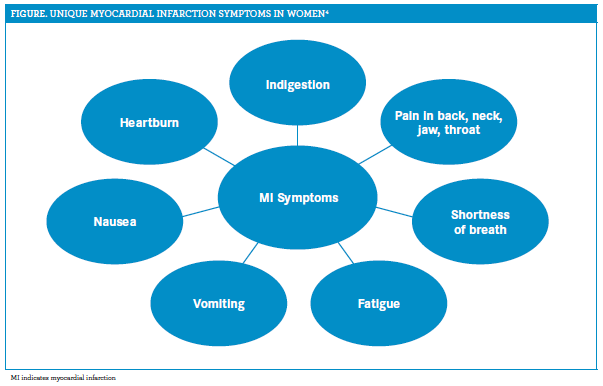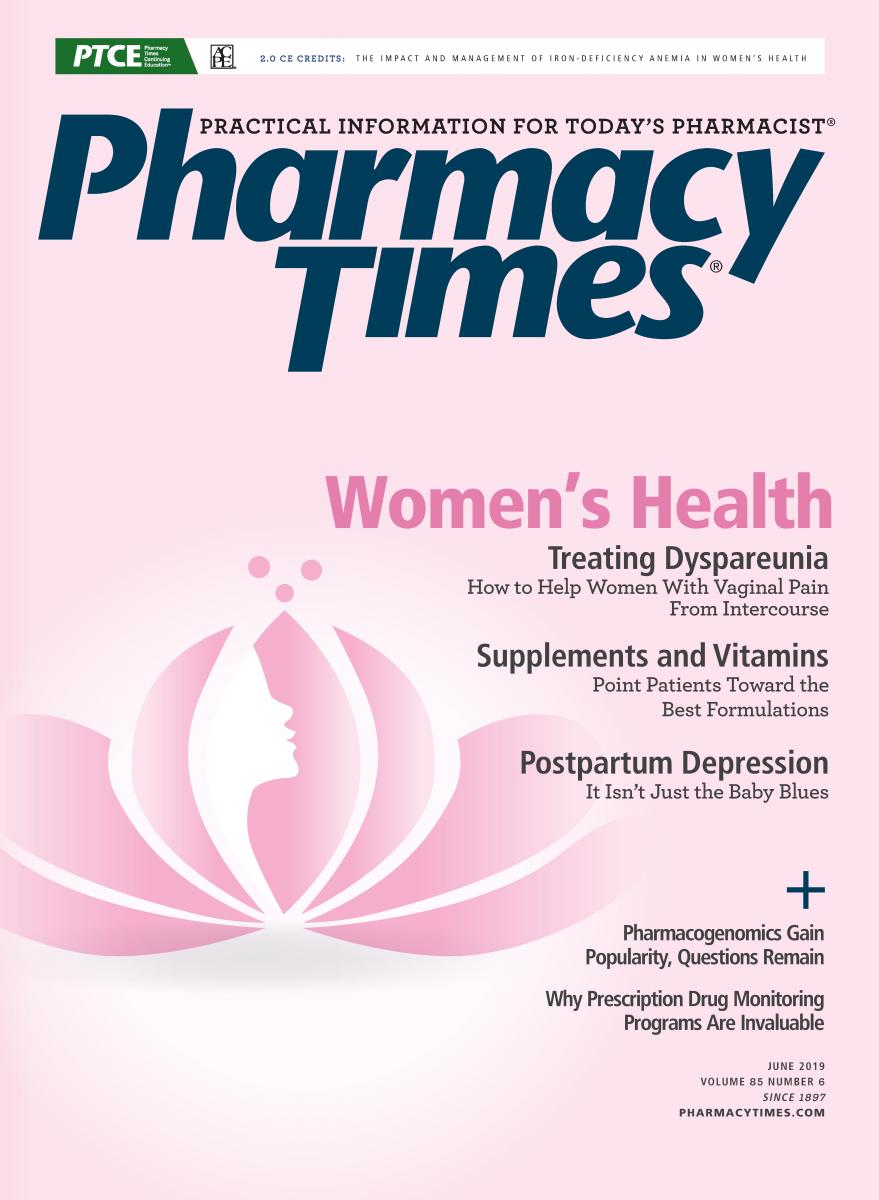Publication
Article
Pharmacy Times
CVD in Women Is an Underrecognized Problem
Author(s):
Cardiovascular disease is their leading cause of death, but education and prevention strategies can reduce the risk.
Cardiovascular disease (CVD) is the leading cause of death in women and is an underrecognized problem, as symptoms present differently than in men. Even an episode of Grey’s Anatomy, which aired in February 2018, portrayed the growing gender bias that surrounds CVD in women when Dr. Bailey was convinced that she was experiencing a myocardial infarction (MI) and her complaints were initially dismissed by her physician.1
Unfortunately, CVD causes 1 in 3 deaths among women each year, which is more than all cancers combined.2,3 Prevention through education is key, and pharmacists can play an important role by using a multidisciplinary approach.
EVIDENCE OF GENDER BIAS
Women generally experience nontraditional symptoms, and this may cause a delay in them seeking medical treatment.4,5 One study found gender disparities when it came to women seeking medical care for heart attack symptoms,6 the most classic of which they may not always exhibit. Women also may experience more subtle symptoms (see figure4), such as jaw pain, that should not be ignored so that immediate treatment can be started if necessary.4

Women with chest pain are less likely to receive guideline-recommended treatment, including aspirin; be resuscitated; or be transported to the hospital using lights and sirens than men.6 The Atherosclerosis Risk in Communities study results showed an increase in the number of women aged 35 to 54 years hospitalized with acute MI from 1995 to 2014.7 Alarmingly, these women were less likely than men to receive guideline-based acute MI medications.7
Part of the problem is that women are historically underrepresented in cardiovascular medication studies involving acute coronary syndrome, coronary artery disease, and heart failure.5,8 Clinical trials involving MI generally use risk prediction models based on male risk factors and symptoms.5 However, evidence demonstrates that women have different risk factors than men.9 Women are better represented in drug trials for atrial fibrillation and hypertension.9 Cardiac risk factors unique to women include autoimmune disease, breast cancer treatment, depression, early menopause, eclampsia, gestational diabetes, and preeclampsia.8 Pharmacists can play an integral role on clinical trial research teams to enhance recruitment and participation of women in cardiovascular studies.
HEART DISEASE PREVENTION AND MANAGEMENT STRATEGIES
The American Heart Association (AHA) Go Red for Women campaign involves increasing awareness about CVD in women through community outreach programs and media. Pharmacists can provide important education to patients in community and hospital practice settings. Educating other health care professionals and patients about heart attack symptoms unique to women will help raise awareness throughout the community.
The AHA and American College of Cardiology released new guidelines in March 2019 that advise against the use of daily low-dose aspirin to prevent a heart attack, stroke, or other cardiovascular events in patients who do not have a history of heart disease, as there is an increased risk of bleeding.10 Low-dose aspirin is now reserved for adults aged 40 to 70 years at high risk of atherosclerotic vascular disease (ASCVD) who are not at an increased risk of bleeding.10 Pharmacists can play an important role in counseling women about the following lifestyle modifications for primary prevention: consuming a healthy diet, exercising for at least 150 minutes per week, and smoking cessation.10 Patients should also maintain a target blood pressure below 130/80 mm Hg.10 Metformin is considered the first-line therapy for patients with type 2 diabetes. Additionally, statins are recommended as first-line treatment for primary prevention of ASCVD in patients with elevated low-density lipoprotein cholesterol levels (>190 mg/dL), those with diabetes, and patients aged 40 to 75 years.10
Aspirin has been shown to be effective in women for the secondary prevention of CVD and in the treatment of acute MI.8 Additionally, statin therapy has similar efficacy in women and men for secondary prevention of ASCVD. Other important medications used for the treatment of CVD include aldosterone and angiotensin-converting enzyme inhibitors; angiotensin receptor, beta, and calcium channel blockers; and antiarrhythmic and antithrombotic drugs.
Jennifer Gershman, PharmD, CPh, is a drug information pharmacist and Pharmacy Times ® contributor who resides in South Florida.
REFERENCES
- Walton-Shirley M. Did Grey’s Anatomy get it right for women with heart disease? Medscape website. medscape.com/viewarticle/892208. Published February 2, 2018. Accessed April 11, 2019.
- CDC. Lower your risk for the number 1 killer of women. CDC website. cdc.gov/ features/wearred/index.html. Updated February 7, 2018. Accessed April 11, 2019.
- AHA. About heart disease in women. GoRedforWomen website. goredforwomen. org/en/about-heart-disease-in-women. Accessed April 10, 2019.
- AHA. Heart attack symptoms in women. AHA website. heart.org/en/health-topics/ heart-attack/warning-signs-of-a-heart-attack/heart-attack-symptoms-in-women. Updated July 31, 2015. Accessed April 12, 2019.
- Cardiology’s problem women. Lancet. 2019;393(10175):959. doi: 10.1016/S0140- 6736(19)30510-0.
- Lewis JF, Zeger SL, Li X, et al. Gender differences in the quality of EMS care nationwide for chest pain and out-of-hospital cardiac arrest. Womens Health Issues. 2019;29(2):116-124. doi: 10.1016/j.whi.2018.10.007.
- Arora S, Stouffer GA, Kucharska-Newton A, et al. The ARIC Community Surveillance Study. Circulation. 2019;139(8):1047-1056. doi: 10.1161/ CIRCULATIONAHA.118.037137.
- Garcia M, Mulvagh SL, Merz CN, Buring JE, Manson JE. Cardiovascular disease in women: clinical perspectives. Circ Res. 2016;118(8):1273-1293. doi: 10.1161/ CIRCRESAHA.116.307547.
- Scott PE, Unger EF, Jenkins MR, et al. Participation of women in clinical trials supporting FDA approval of cardiovascular drugs. J Am Coll Cardiol. 2018;71(18):1960- 1969. doi: 10.1016/j.jacc.2018.02.070.
- Arnett DK, Blumenthal RS, Albert MA, et al. 2019 ACC/AHA Guideline on the Primary Prevention of Cardiovascular Disease. Circulation. 2019;CIR0000000000000678. doi: 10.1161/CIR.0000000000000678.







